The Egyptian Museum
Our final insights into Ancient Egypt came on our tour of the Egyptian Museum. The museum covers 7,000 years of history including the largest collection of ancient Egyptian art in the world. Key features of the museum are the treasures of the boy-king Tutankhamun, including his gold mask, the solid gold sarcophagus that held his mummy and his beautiful throne.
King Tutankhamun’s mummy was entombed the gold funeral mask, inside of three coffins, inside a sarcophagus, inside five shrines. There are several examples in this Link. Talk about claustrophobic….!!!!
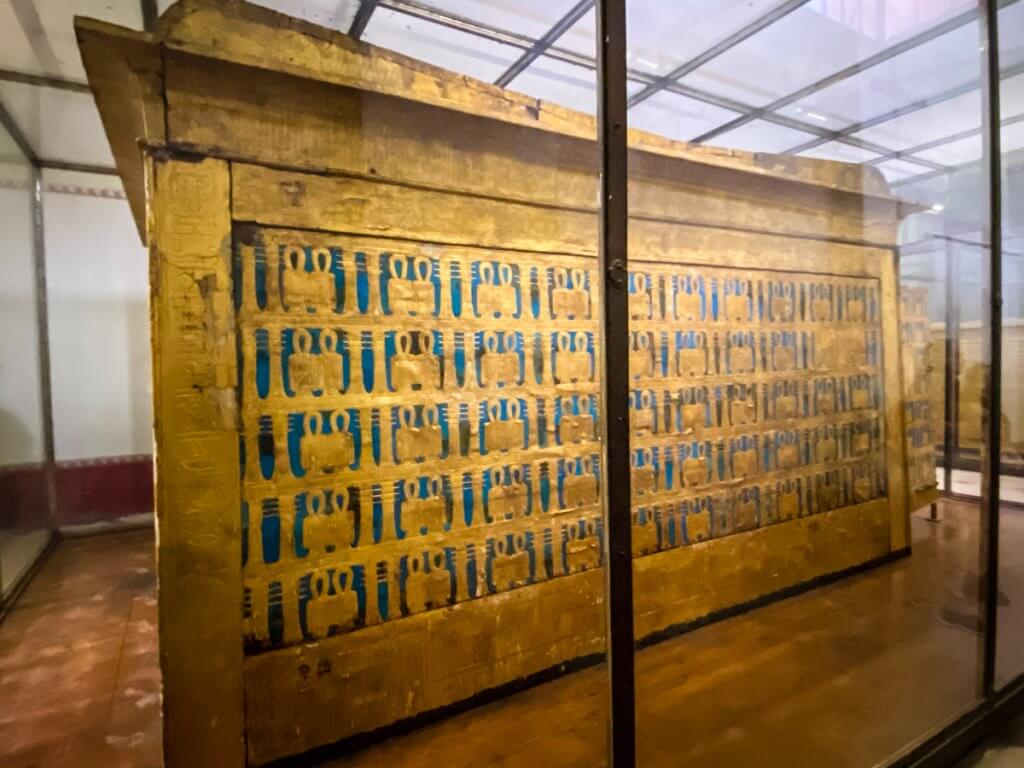
King Tut’s most outer shrine. 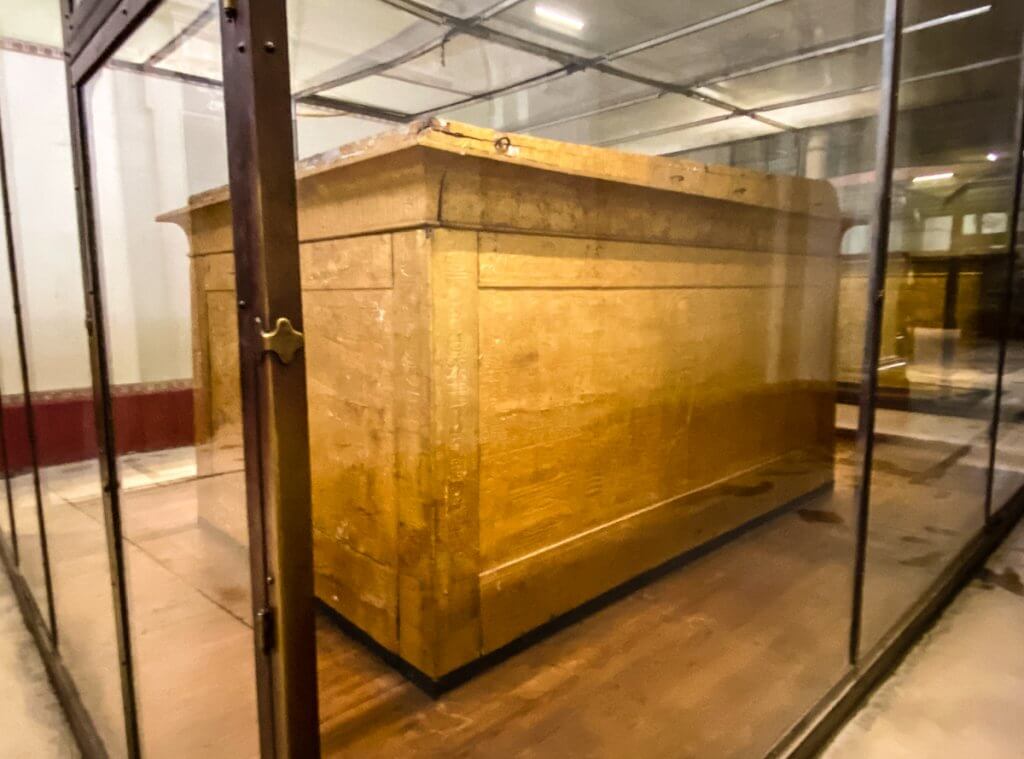
The next level of shrine. 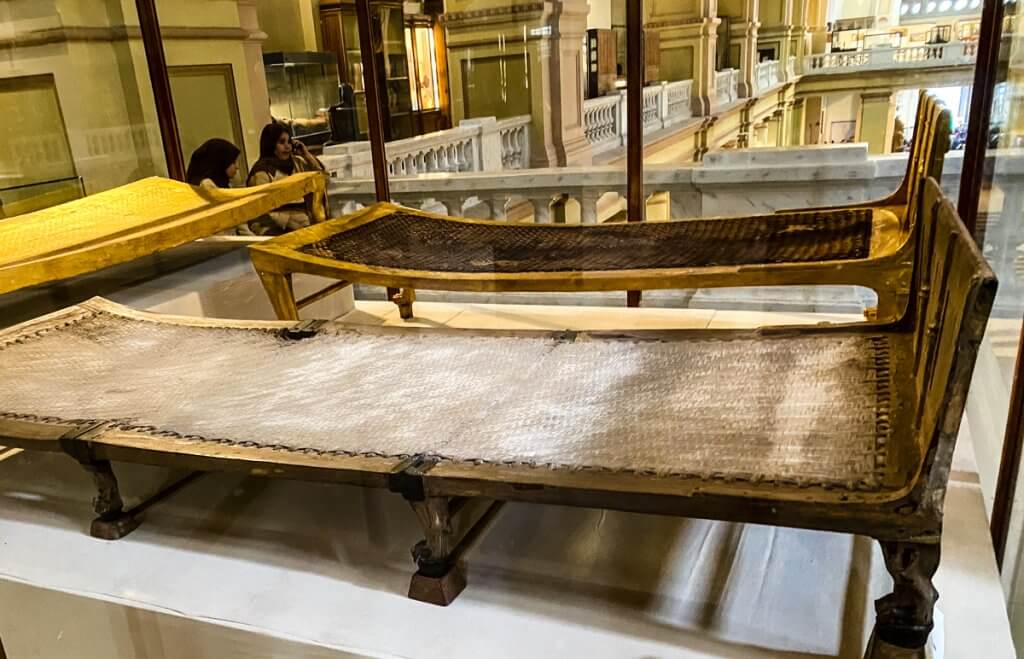
A 3,300 year old bed. 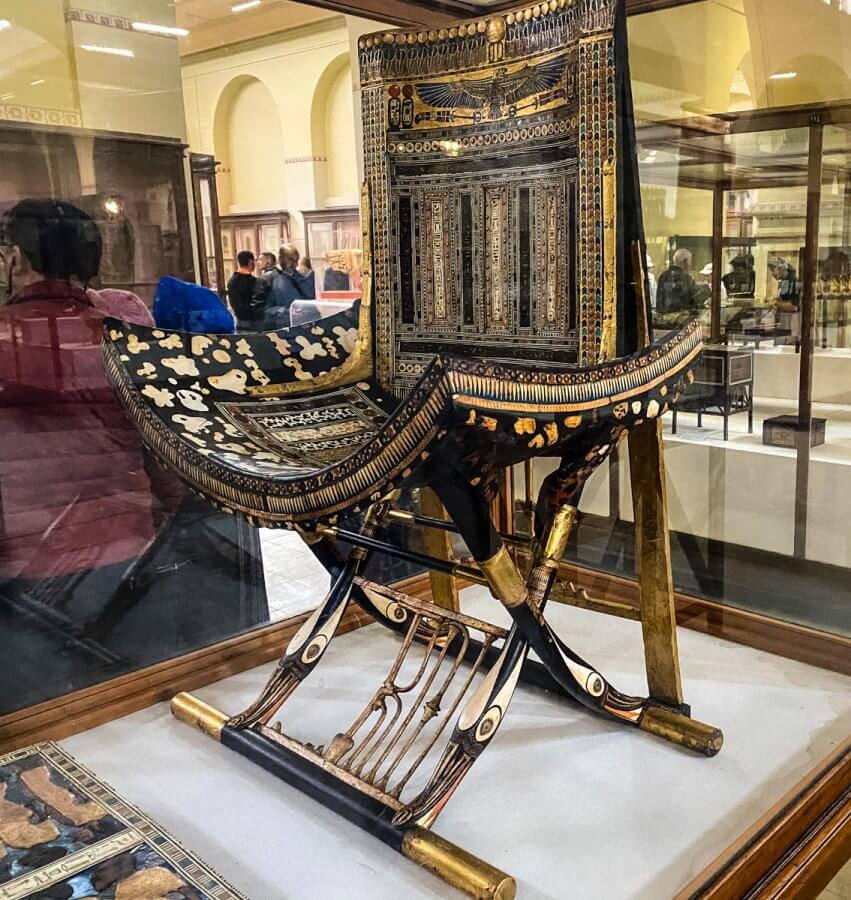
A 3,300 year old folding chair. 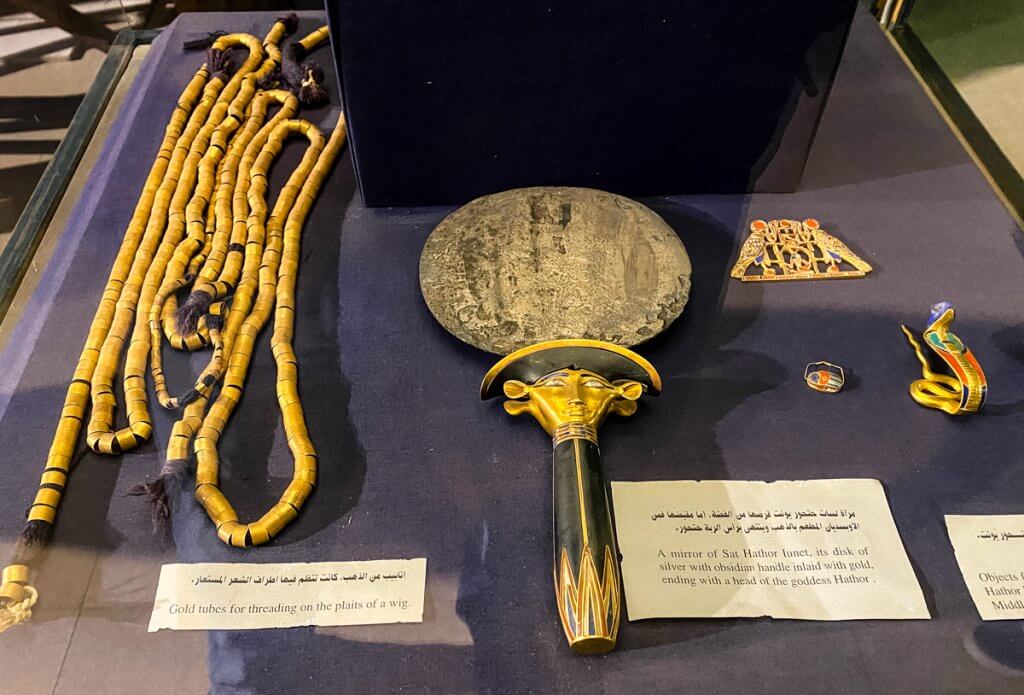
A silver and gold mirror. 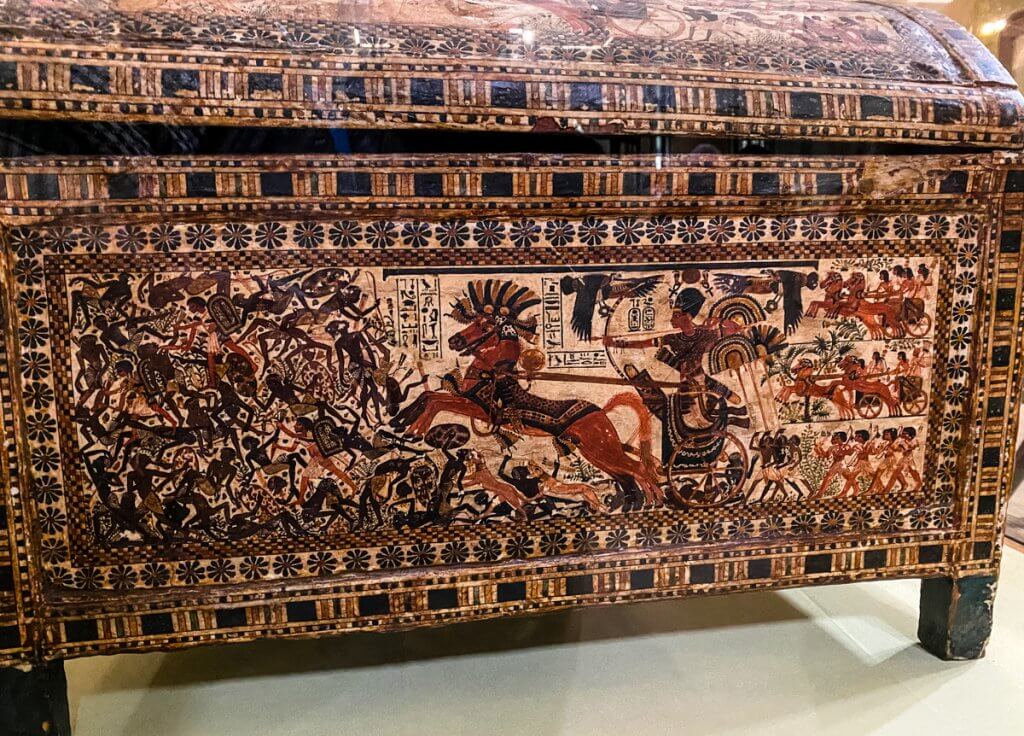
Very elaborate chest found inside King Tut’s tomb. 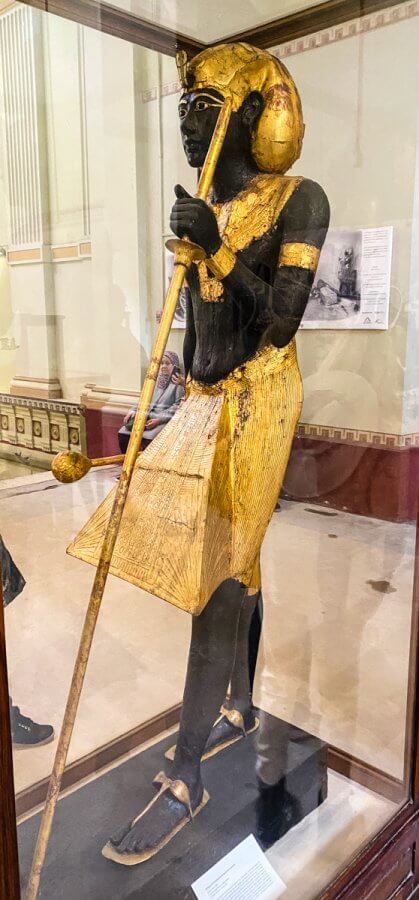
One of the wooden warriors placed inside the tomb to protect King Tut. 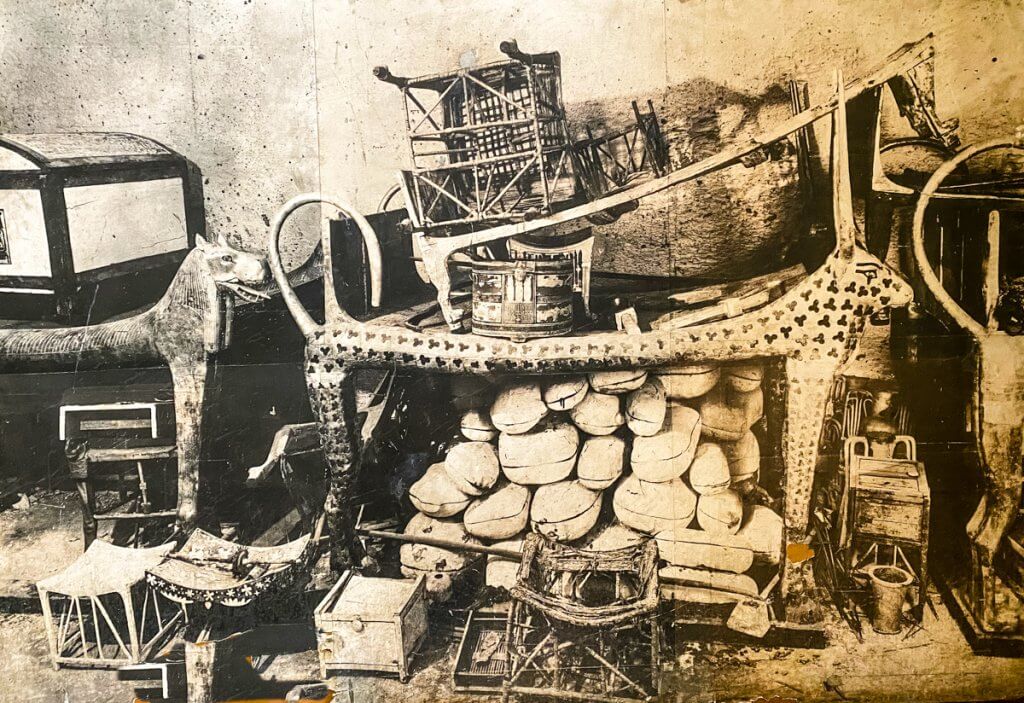
Other treasures discovered in King Tut’s tomb as photographed by Howard Carter in 1922. 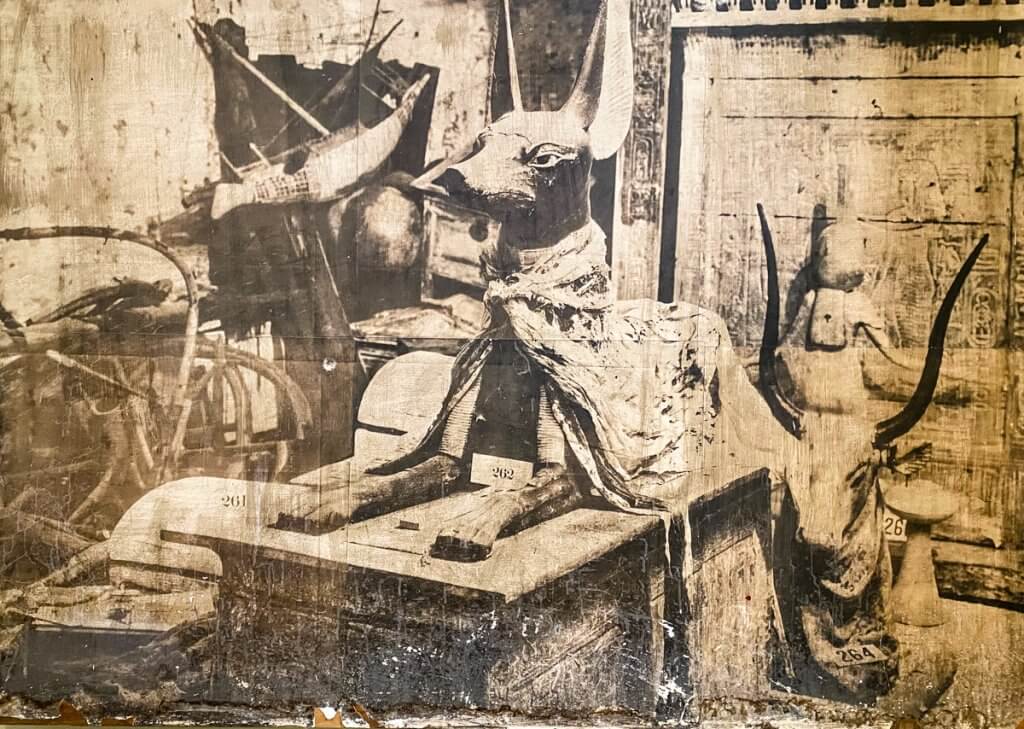
A picture of King Tut’s guard dog statue – taken by Howard Carter in 1922. 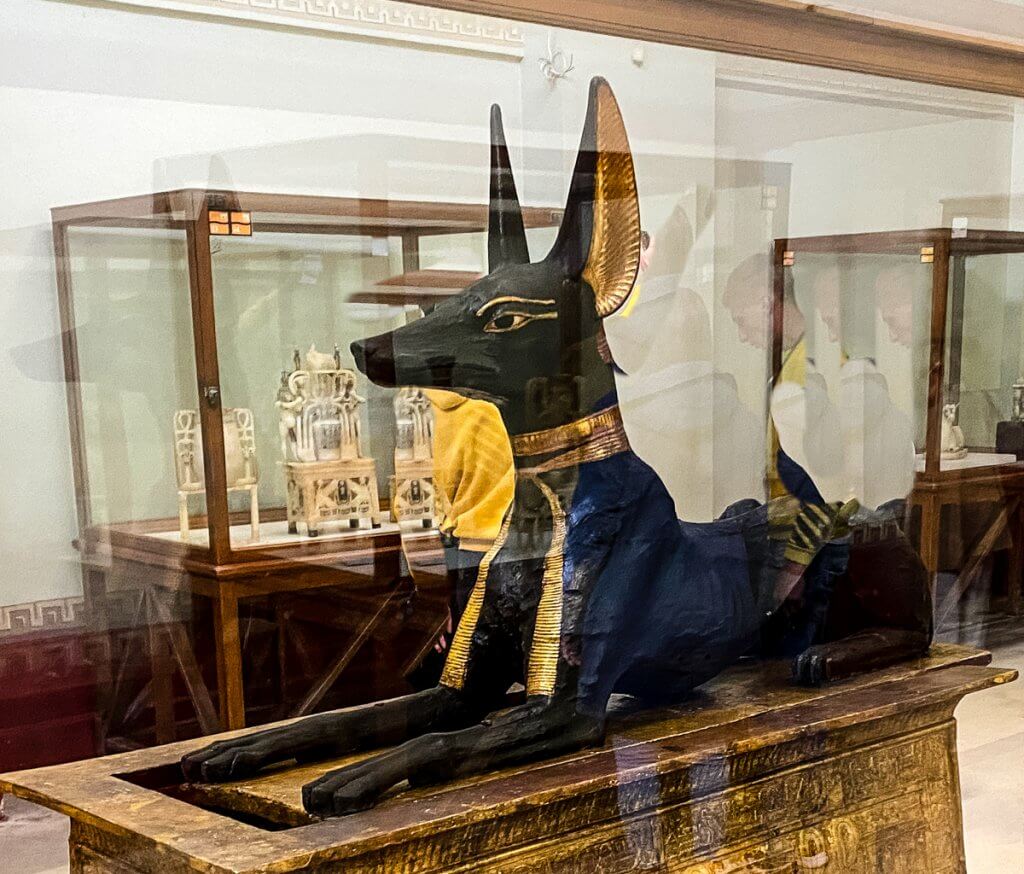
The actual guard dog statue from King Tut’s tomb. 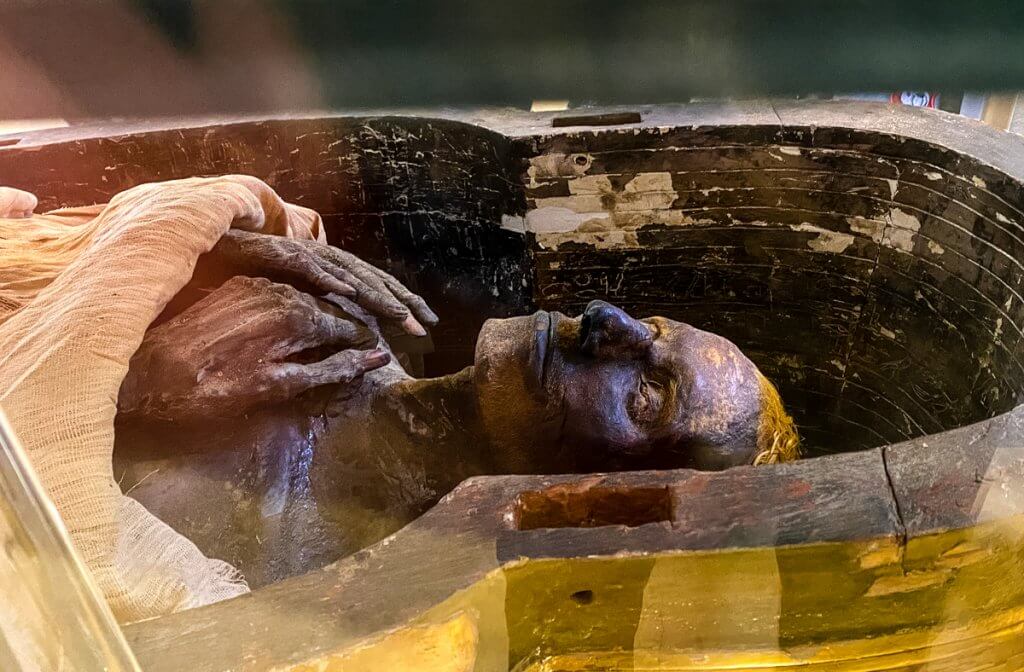
The mummified body of King Tut’s great grandfather, Yuya, the husband of Tuya. 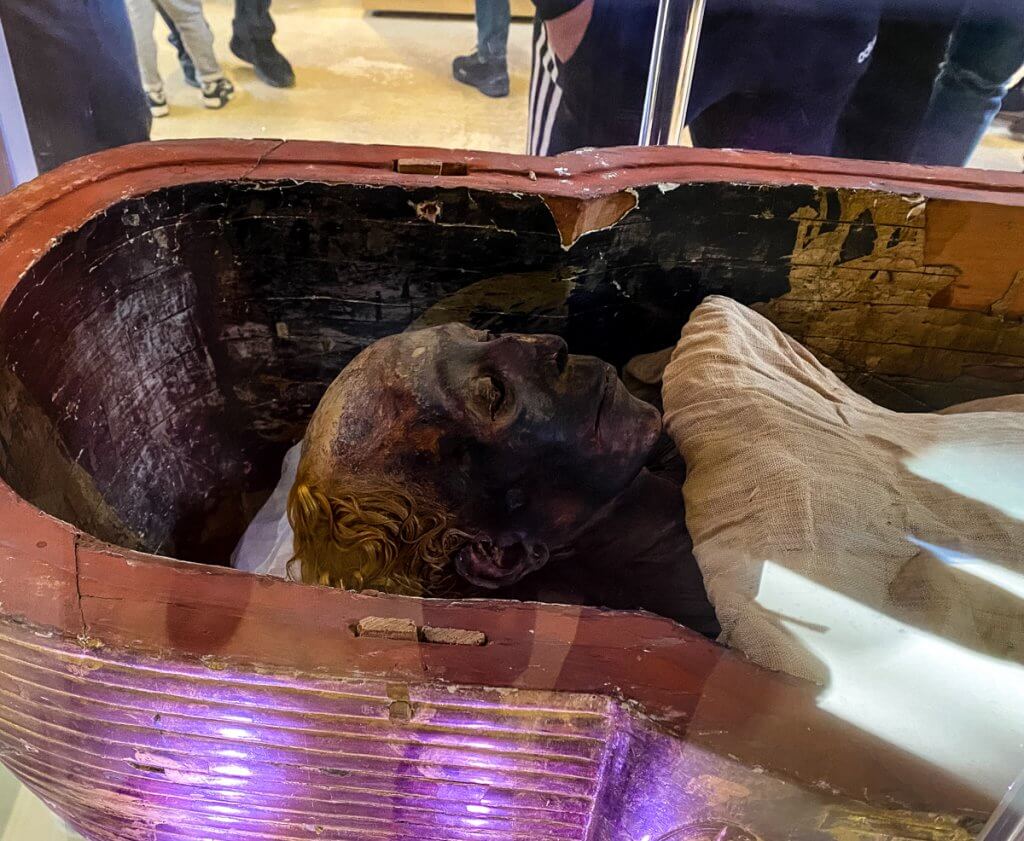
The mummified body of King Tut’s great grandmother, Tuya, the wife of Yuya. 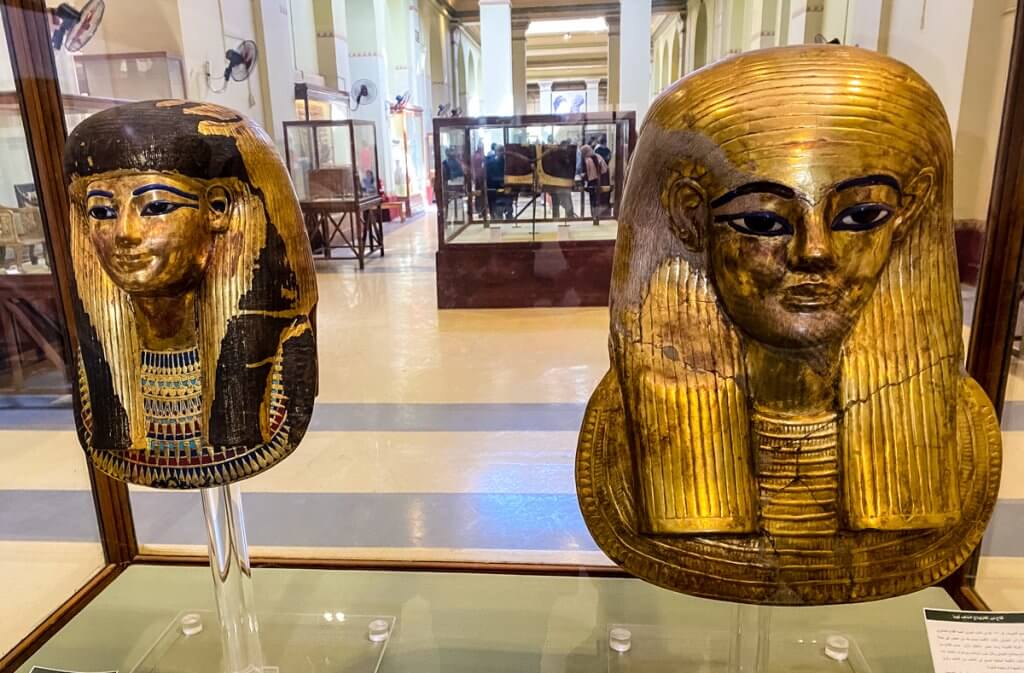
The funeral masks of King Tut’s great grandparents – Tuya (on the left) and Yuya (on the right). 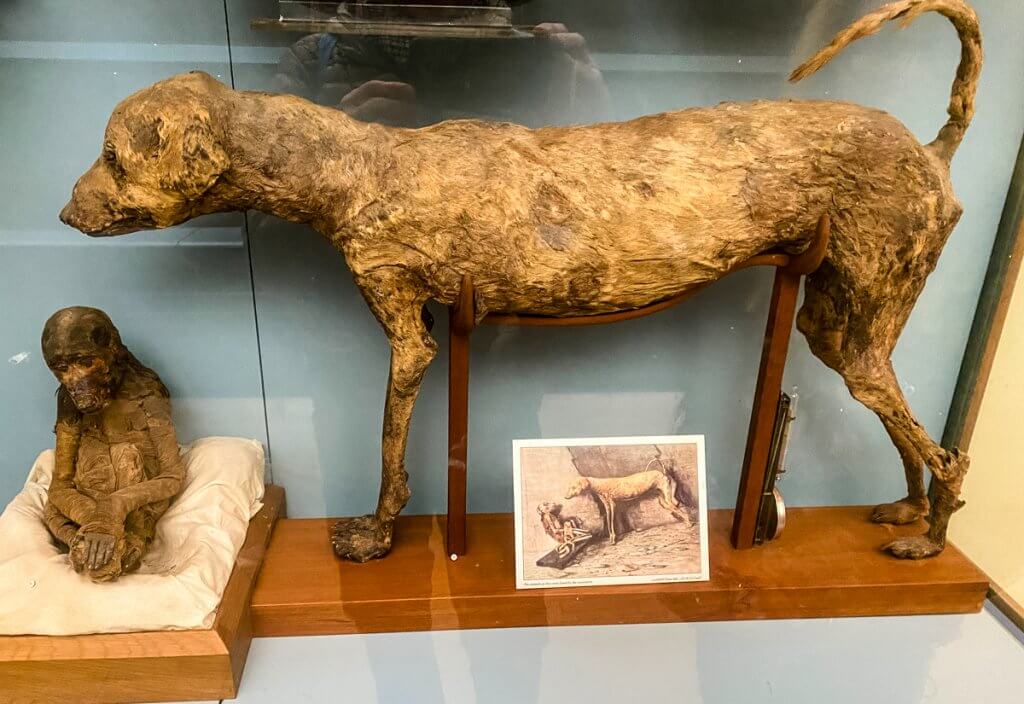
Mummified dog and monkey – Egyptian museum. 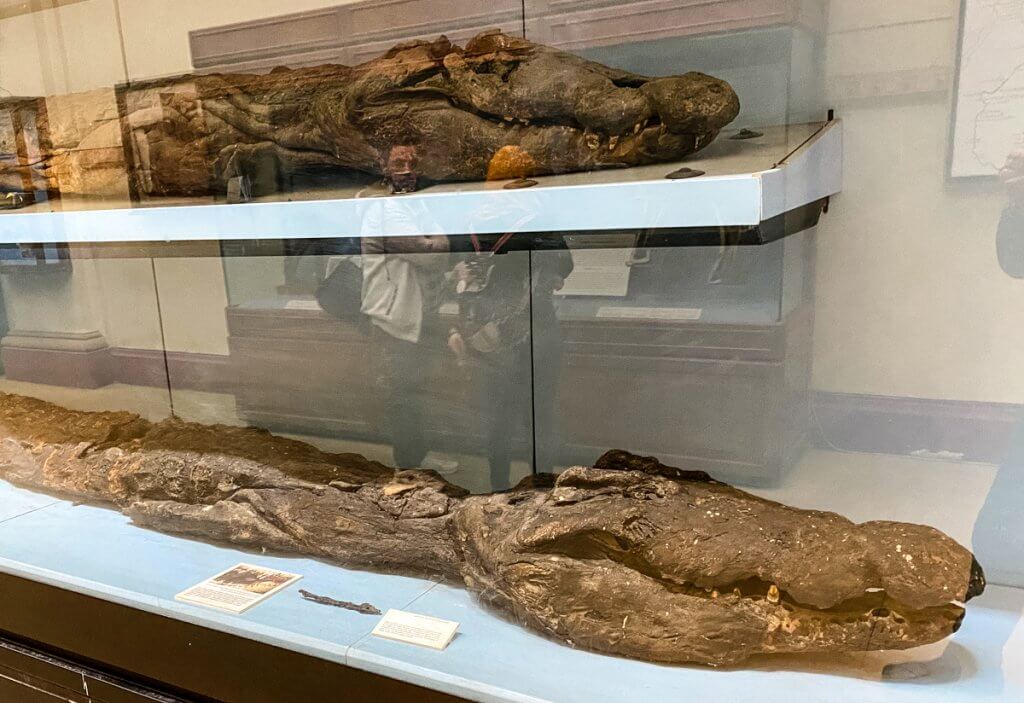
The mummified body of a large crocodile (on top) and a HUGE crocodile (we measured 20 feet) on the bottom. On the very bottom of the pic is the mummified body of an 8″ baby croc.
Exploring Old Cairo
Our final afternoon with our Egyptologist, Wael, was spent exploring the oldest area of Cairo, sampling Jewish, Christian and Muslim sites.
Located inside the Roman fortress in Old Cairo is the Church of St. Sergius. It is believed to have been built by Roman soldiers in the third or fourth centuries. Tradition says that the church was built over a place that Mary, Joseph and the infant Jesus rested on their journey in Egypt. Later it was turned into a Coptic church by the Egyptians. Dedicated to two soldier-saints, Sergius and Bacchus, the church has been rebuilt and restored since medieval times.
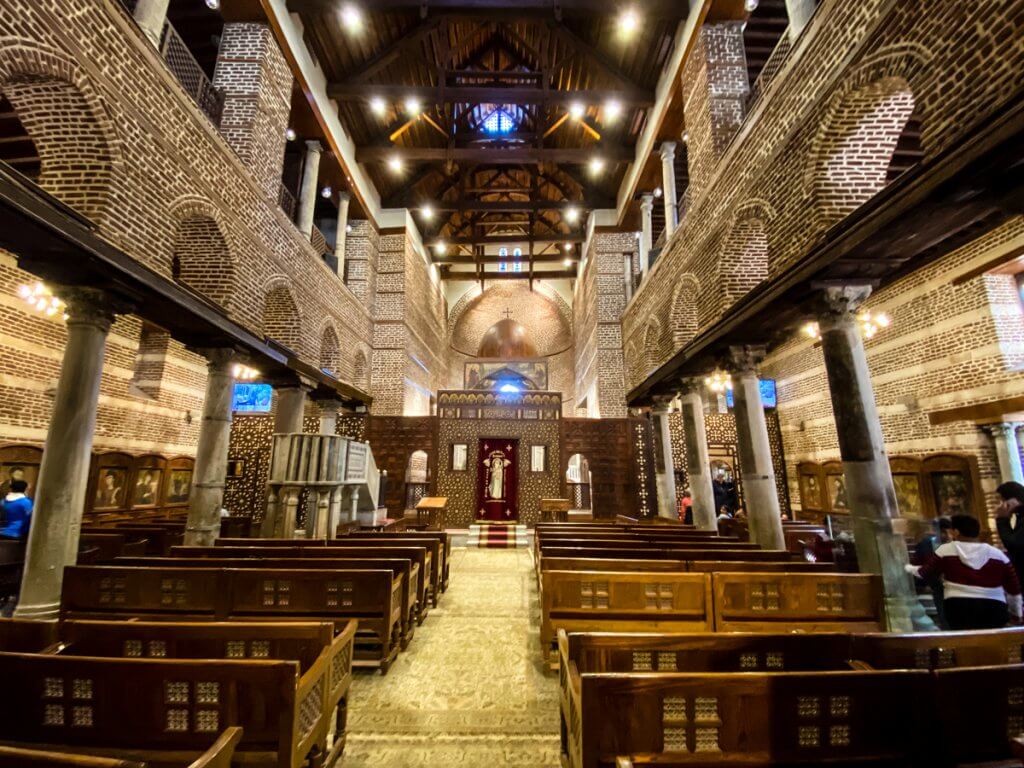
The Church of Martyrs Sergius and Bacchus in The Cave, is most famously known as the Cavern Church. This Coptic Church is built over a cave where Joseph, Mary, and the baby Jesus stayed for three months after fleeing to Egypt to escape persecution from King Herod of Judea.
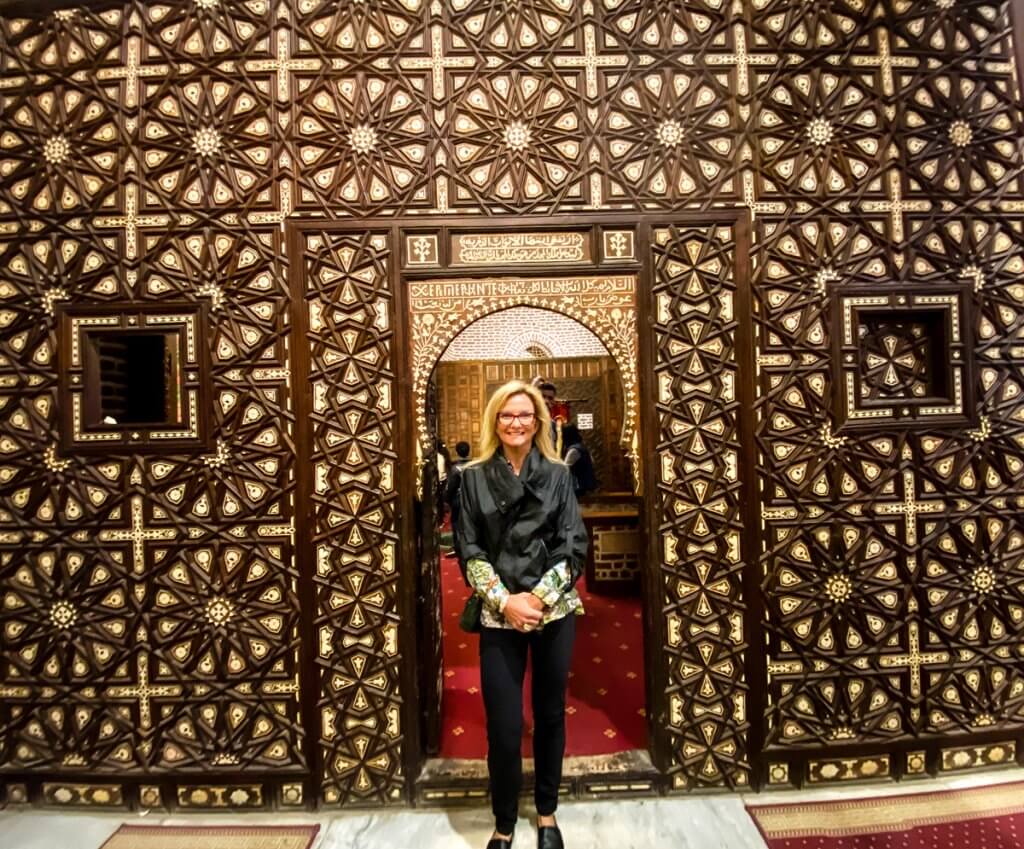
Ornate facade of the Cavern Chruch. 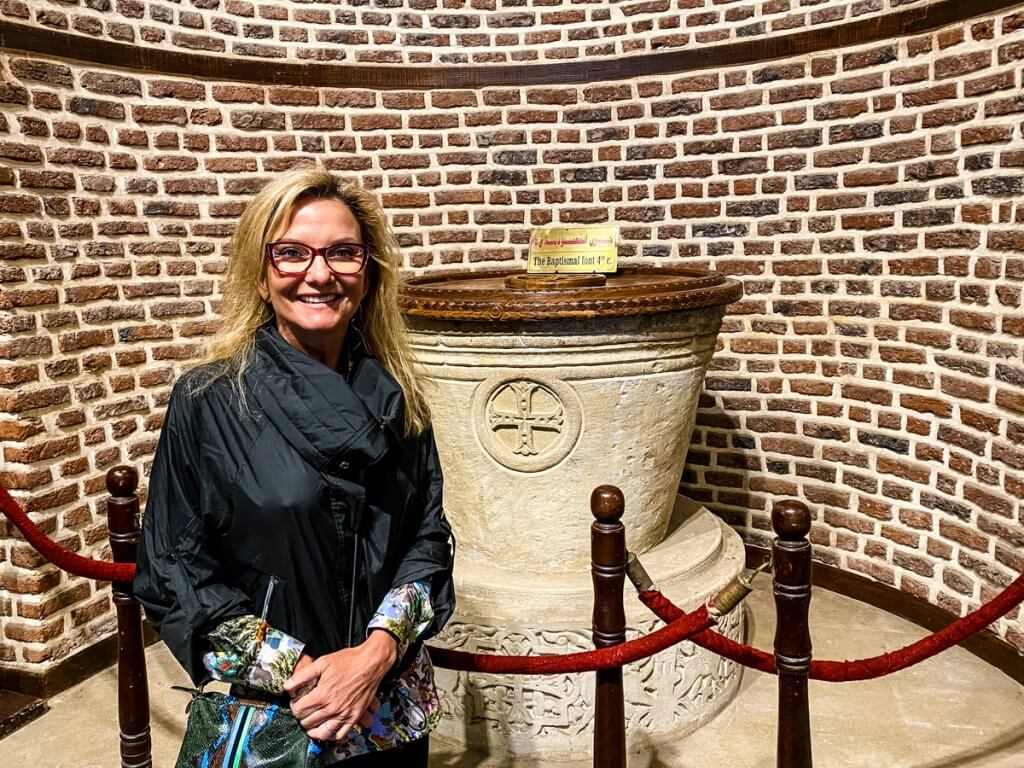
The baptismal font of the Cavern Church.
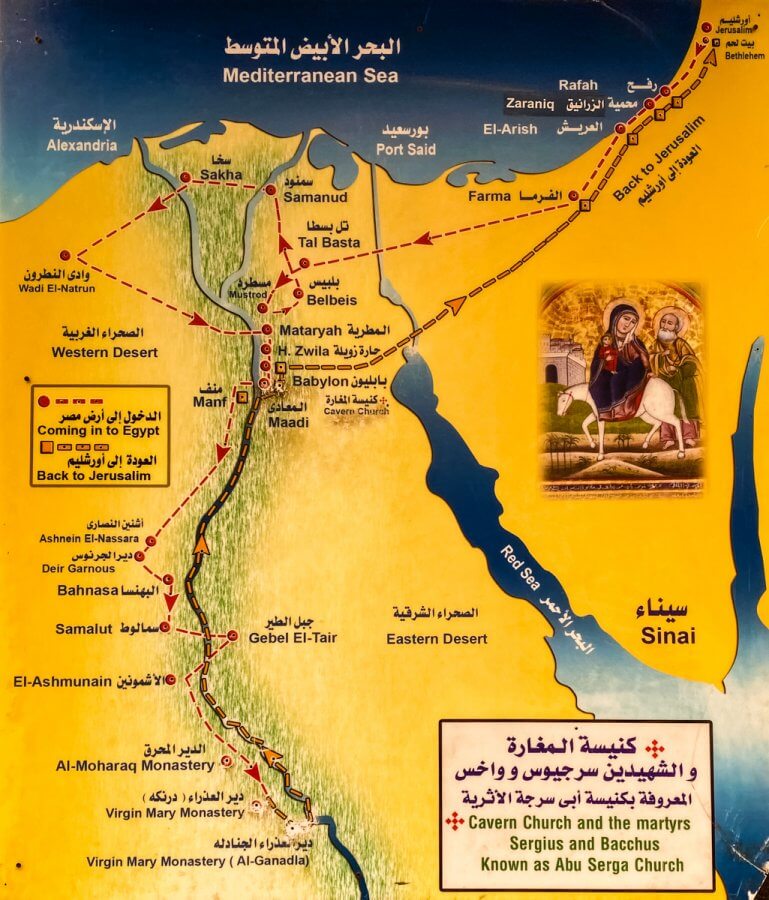
A map showing the route of Holy Family’s exodus from Judea to Egypt as well as the return route. 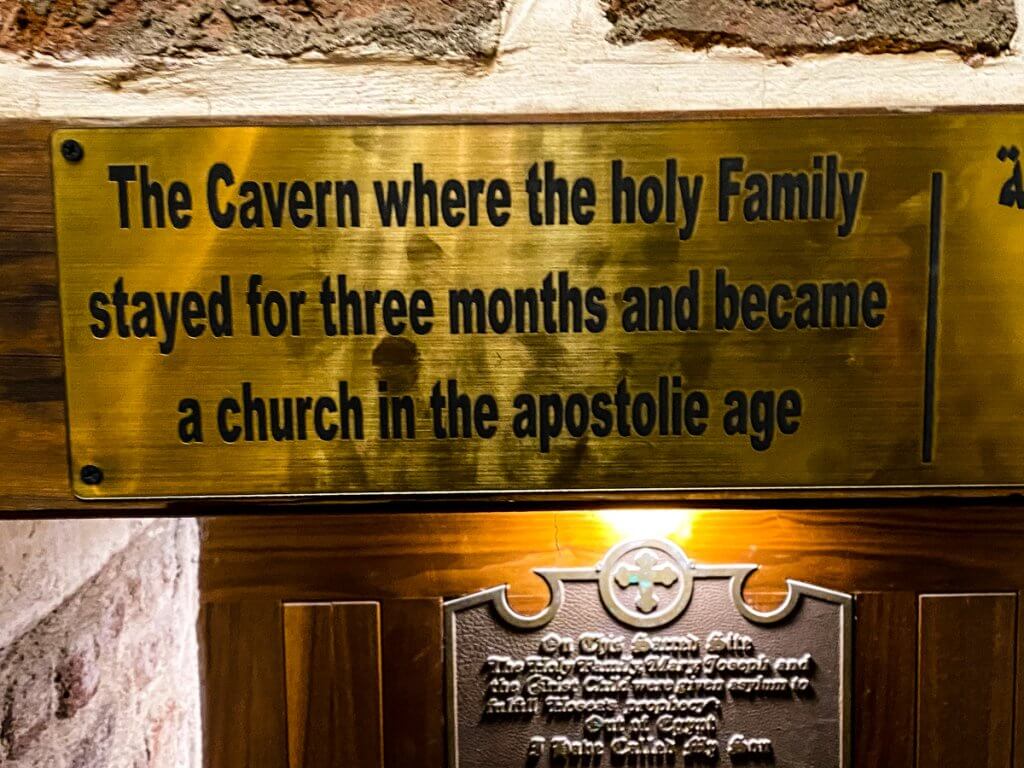
The cave where Mary, Joseph and Jesus stayed is accessible by going down some steps. 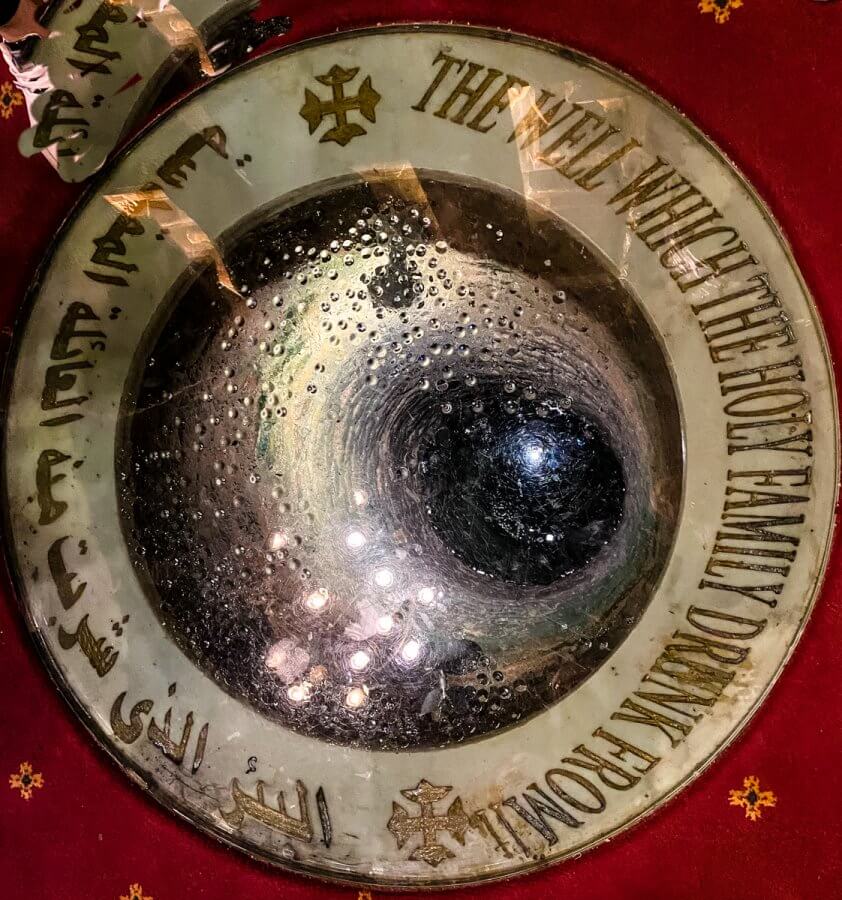
A well used by the Holy Family is highlighted inside the cave. 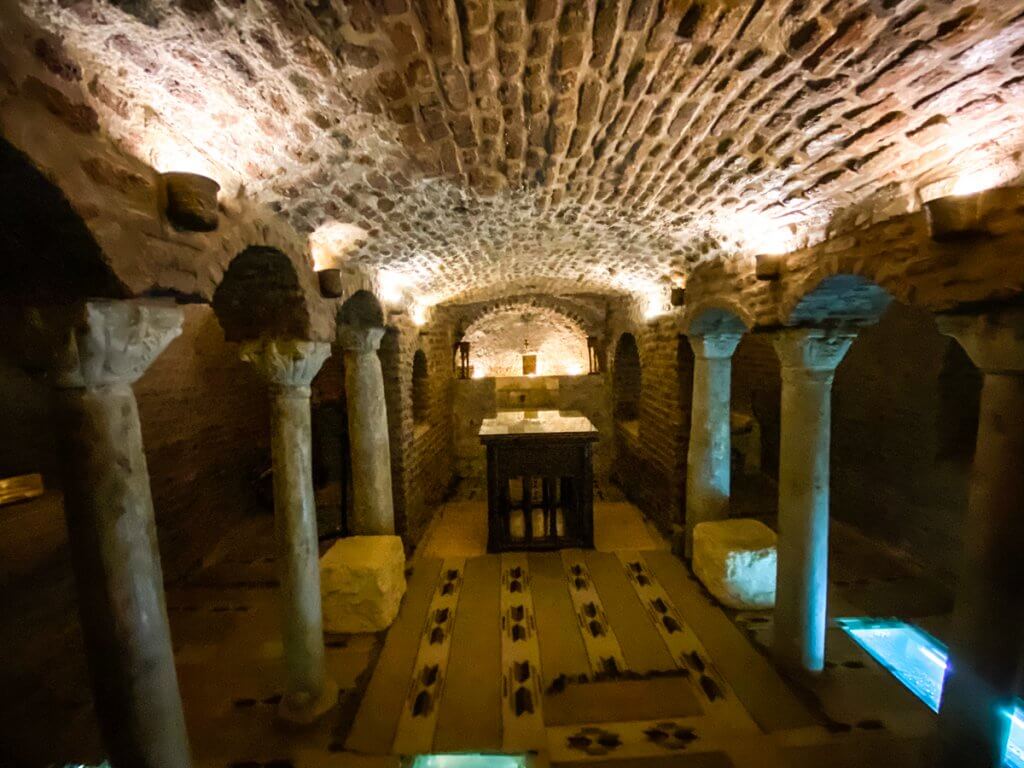
Living quarters for the holy family inside the cave. Mary, Joseph and Jesus are believed to have lived here for about three months.
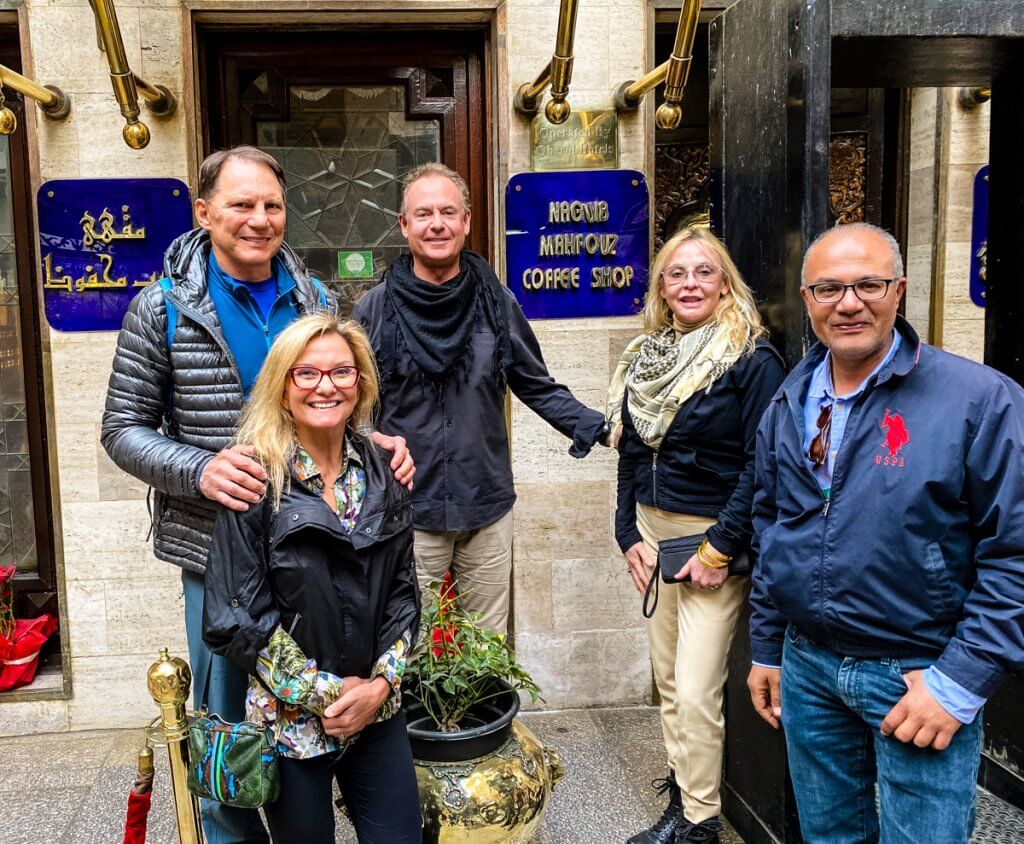
Our group following perhaps the best ever lunch in Egypt at the historic coffee shop named after Egypt’s most famous Nobel Prize for Literature winner, Naguib Mahfouz.. 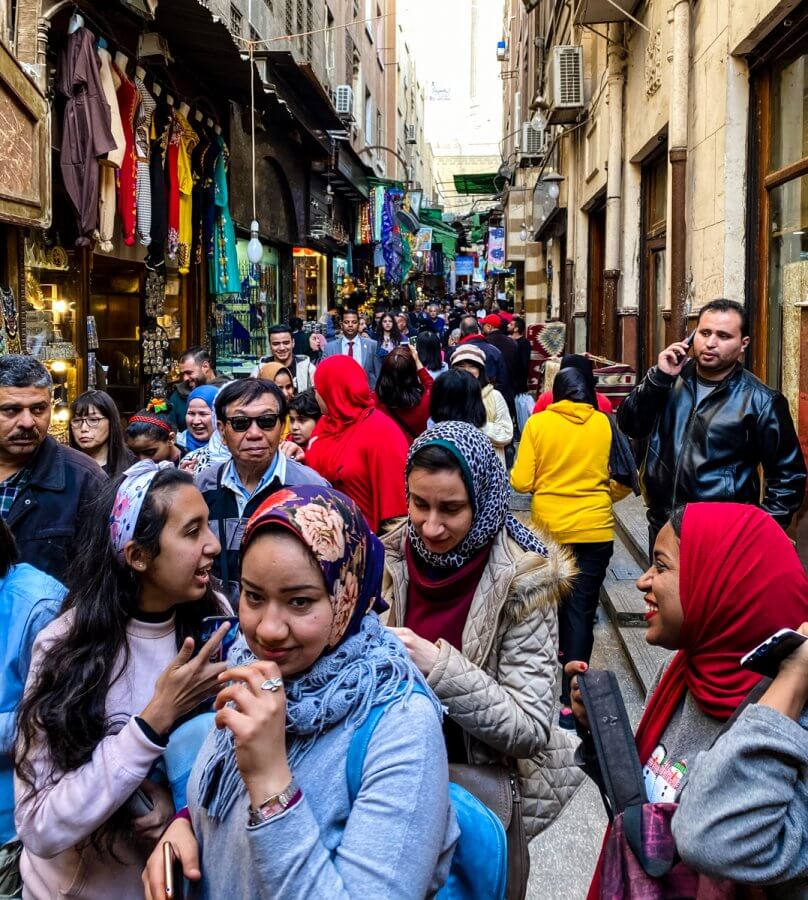
A scene of the market streets of Khan el-Khalili, a famous bazaar and souq in the historic center of Cairo. A fitting end to the our tour of the chaos of Cairo.
Next was the Synagogue of Ben Ezra, built during the time of the once-thriving Jewish community in Egypt. Here the so-called “Geniza Documents” were found, a treasure hailed as an unparalleled source of information about the life of the Jews in Egypt’s past. The Synagogue of Ben Ezra was originally a Christian church that the Christians sold to the Jews, in 882 AD to be able to pay the annual taxes imposed by the Muslim rulers at that time.
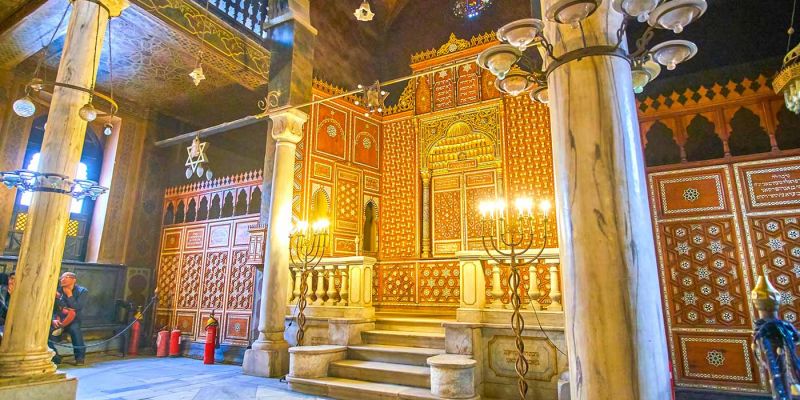
Finally, making our trifecta of religious buildings complete, we visited Al Rifai Mosque, which houses the tomb of the last Shah of Iran. The mosque also hosts the tombs of the Egyptian royal family and King Farouk, the last king of Egypt.

Modern Day Cairo
Though Cairo isn’t exactly a walking city, we did spend one afternoon out of Ancient Egypt and in the 21st century.
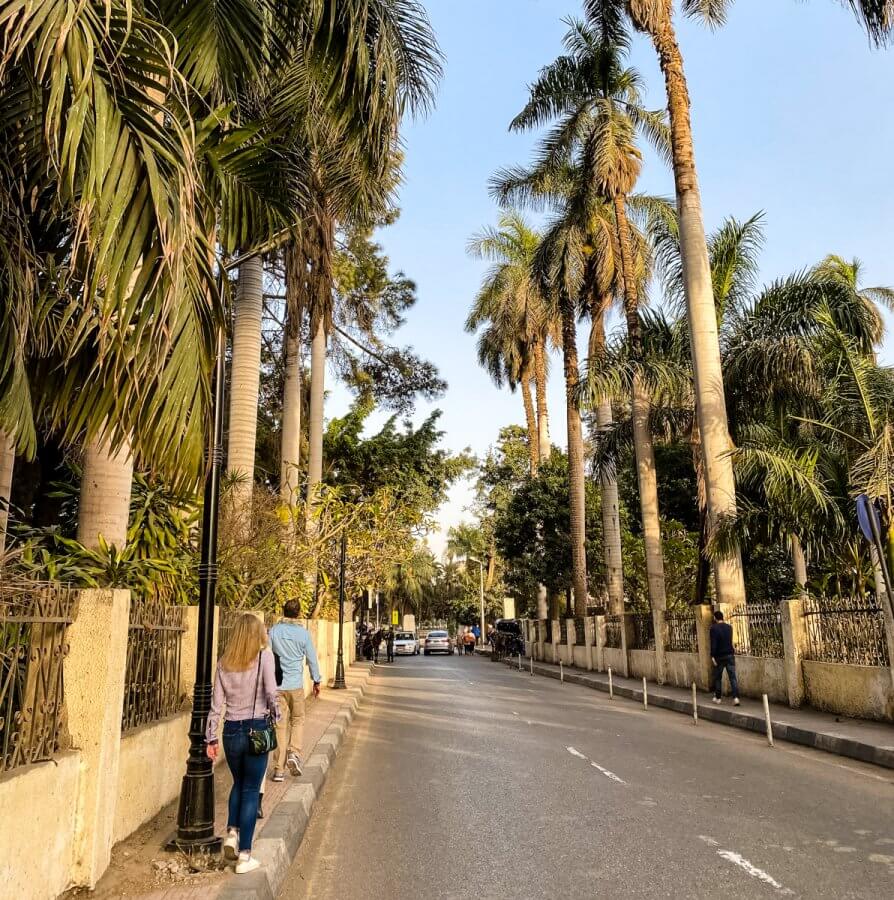
Walking the streets of Cairo in the neighborhood of Zamalek. 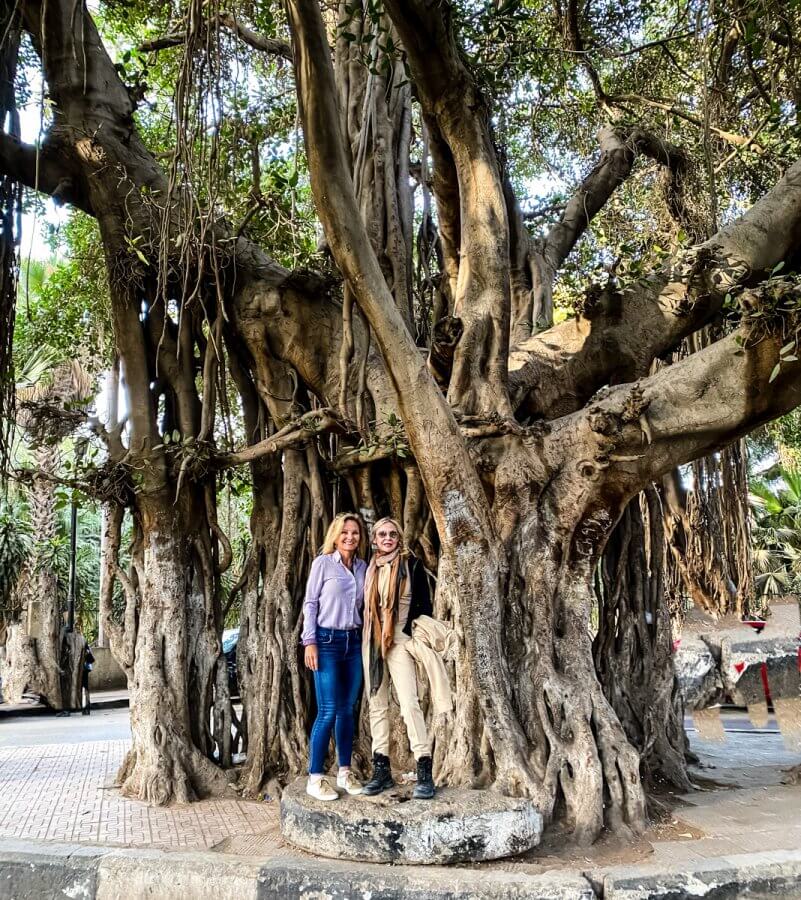
Nature in the middle of Cairo. 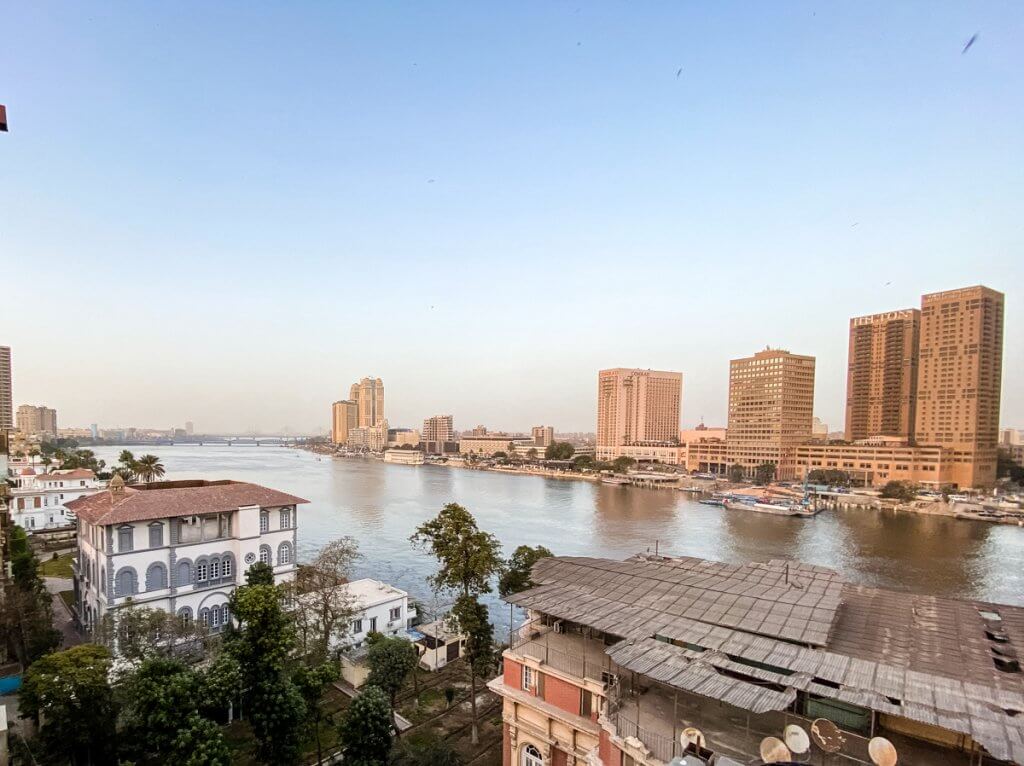
The “new” business section of Cairo across the Nile. 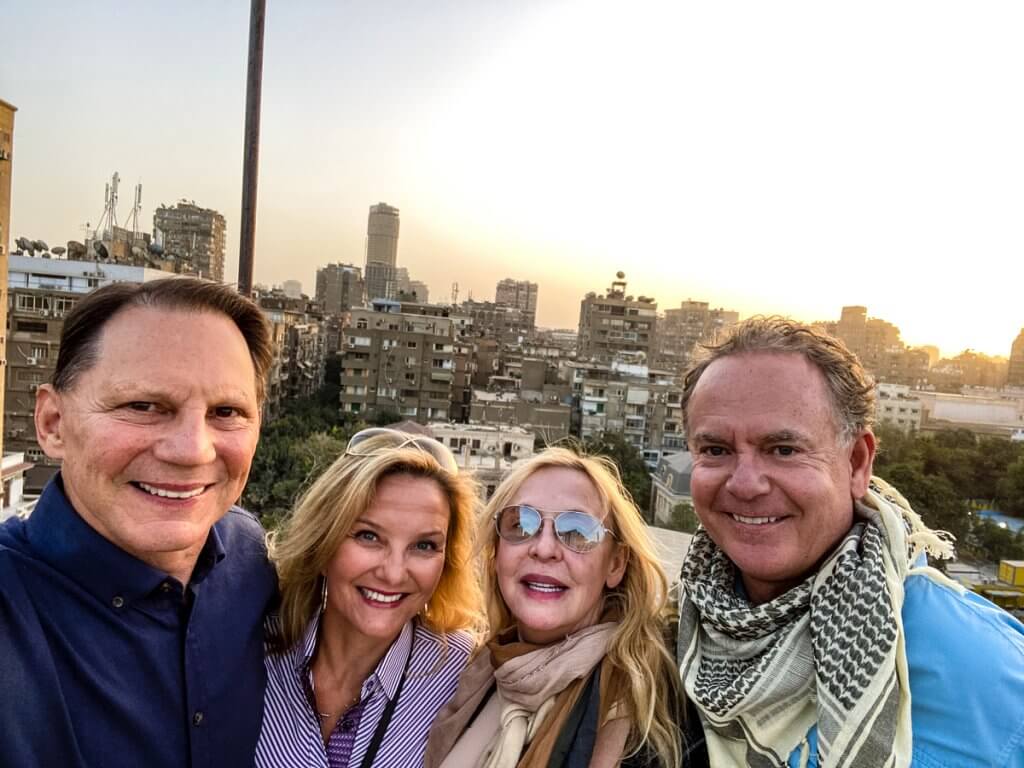
Group selfie on the top of a sunset bar…we were the few non-Egyptian tourists in attendance. 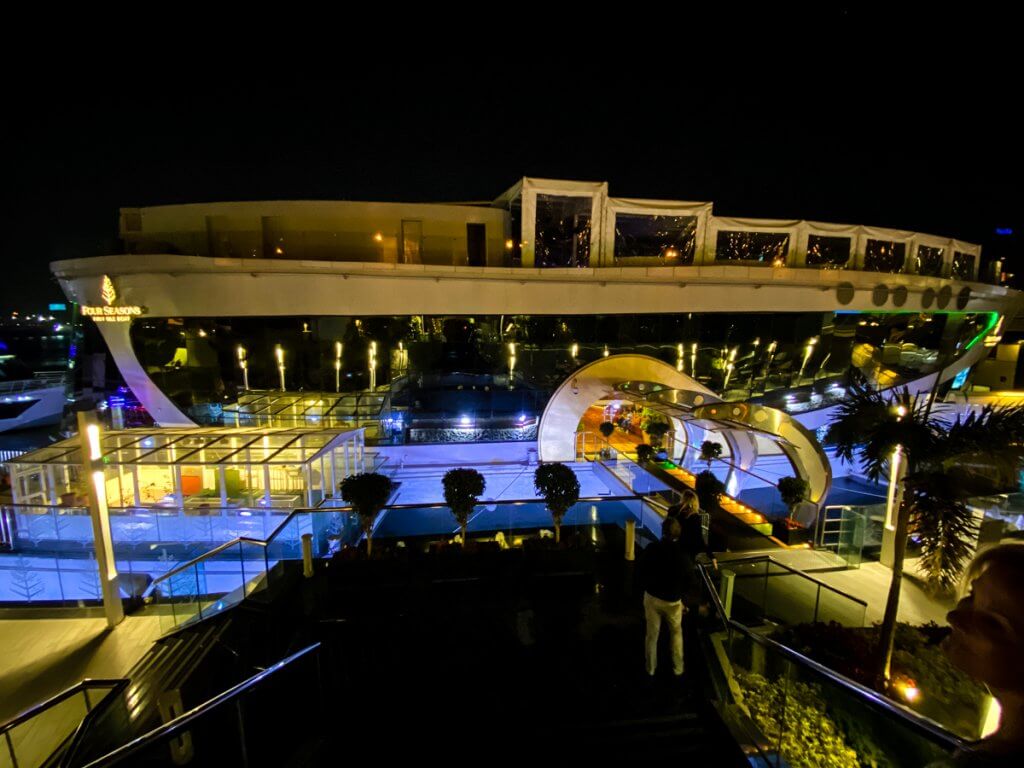
A brand new “stationary” river boat of restaurants on the Nile in Cairo. 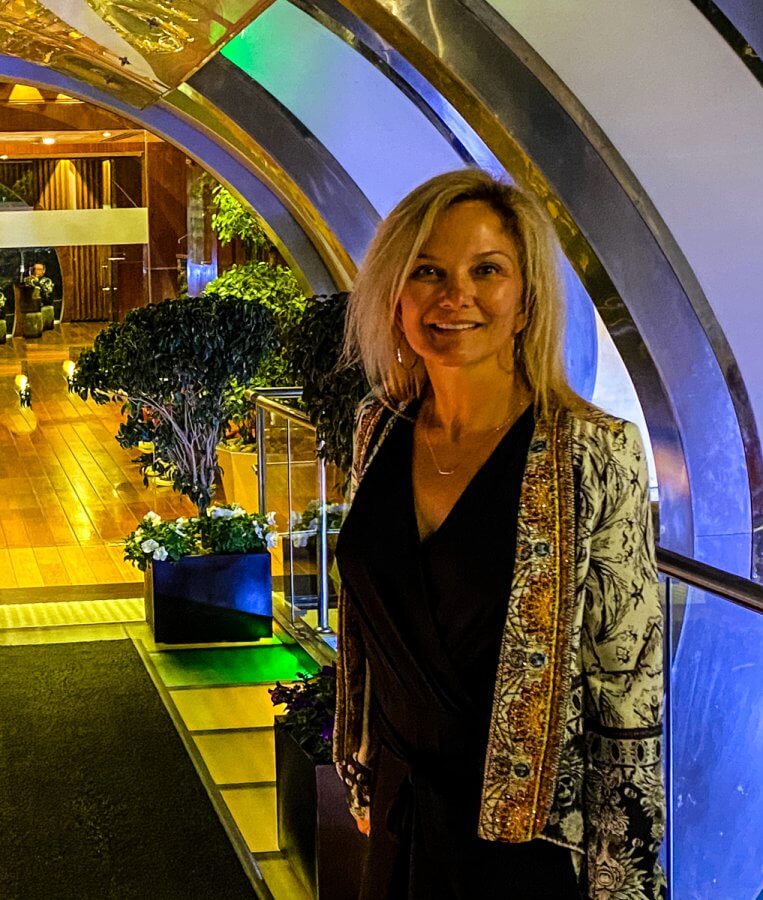
We were looking forward to some non-Egyptian fare at this new Indian Restaurant on the Four Seasons stationary river boat, and we weren’t disappointed. 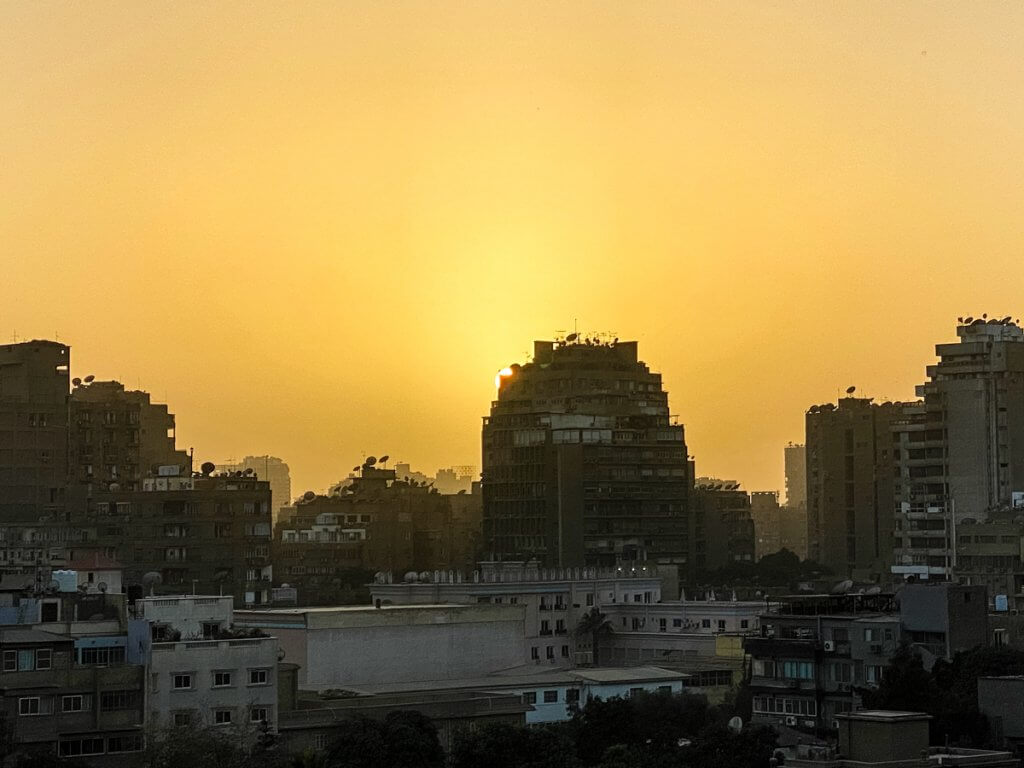
Sunset over Cairo.
Our Thoughts on Egypt
Of course, we have been ‘shocked and awed’ by the antiquities we have seen in the past week. We have also been pleasantly surprised by modern Egypt generally. Our commentary here will be reflective of the insights of our two Egyptologists who served as our tour guides this week.
As with many American travelers, even seasoned travelers, we had been slightly nervous about visiting Egypt since the 2011 revolution and subsequent unrest. While we won’t profess to understand the intricacies of the 2011 revolution, the rise of the Muslim Brotherhood’s political power, the subsequent military coup overthrowing them, or the current political and civil rights situation, we have witnessed an economy that seems to be thriving compared to the dark years of 2011-2015. Some media and global political institutions claim that the situation is Egypt is worse than it was under Mubarak, in terms of political power and civil rights. But that is far from the prevalent attitude of the Egyptians we talked to.
For many Egyptians, there is reason for optimism in Egypt today, and the country has come a long way from the very dark and difficult years from 2011-2015. The government, and the modern Egyptian citizen, seem to be largely secular and relatively tolerant religiously. 20% of the 100+ million people in Egypt are Christian, and a message of welcoming acceptance was prevalent.
Economically, the comeback has been pretty dramatic. Egypt has gone from 114th in the world for quality of roads to 28th. It ranks first in FDI (Foreign Direct Investment) out of all African countries; in 2018 it was 3rd in GDP growth after China and India. Due to the strength of the economy, it has one of the strongest currencies in recent years against the US dollar. Since 2014, Egypt has embarked on a World Bank program to benefit 3.5 million Egyptians through low-income housing. Free trade agreements with other African nations make it attractive to big multinationals like GE, Mercedes and Toyota.

The Intersection of Economic Development and Ancient Egypt
And to tie it all together, there is the intersection of economic development and the antiquities: 5,000 construction workers labor around the clock to finish the long-awaited Grand Egyptian Museum.
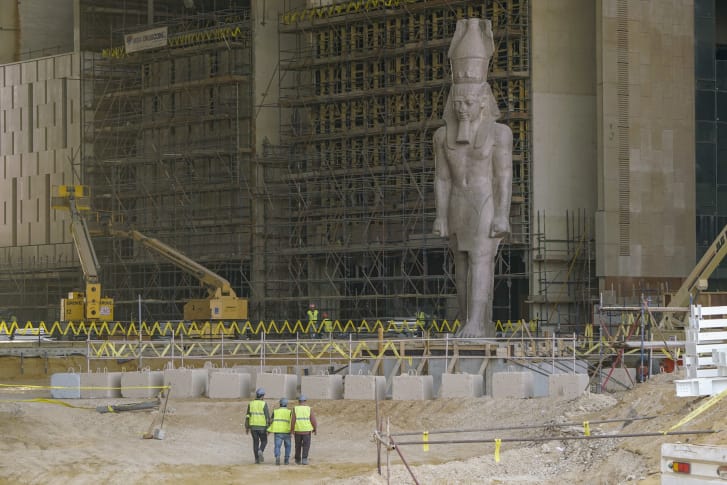
Expected to open by the end of this year, the 5.2-million-square-foot structure will become the world’s largest museum devoted to a single civilization. At a cost of more than $1 billion, the museum will re-house and restore some of the country’s most precious relics. Its expansive, glass-fronted building offers sweeping panoramas of the Giza plateau and Great Pyramids, which stand just two kilometers away. Eventually the two areas will be joined by one long pedestrian promenade. The facility’s 17 labs are helping to prepare artifacts for display. King Tut’s bed is being re-made by wood specialists, his jewelry is being strung back to life in the organics lab and the grand obelisks of his era are receiving facelifts in the heavy stones room. And this is one – albeit the main one – of several new museums in the works in Egypt.
A good time to ‘walk like an Egyptian’.
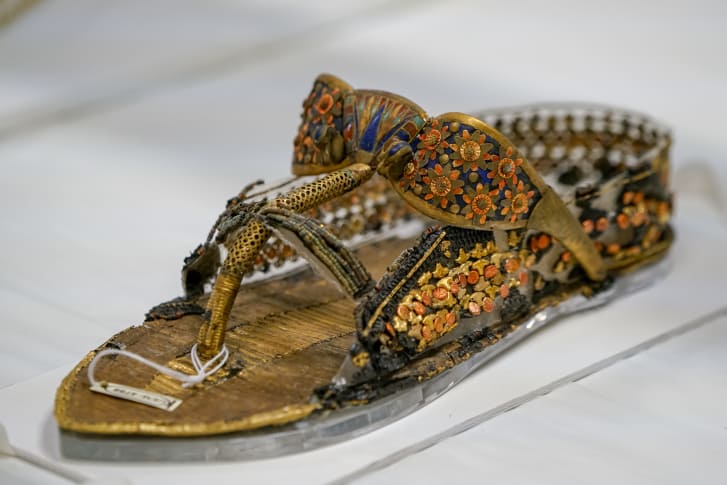

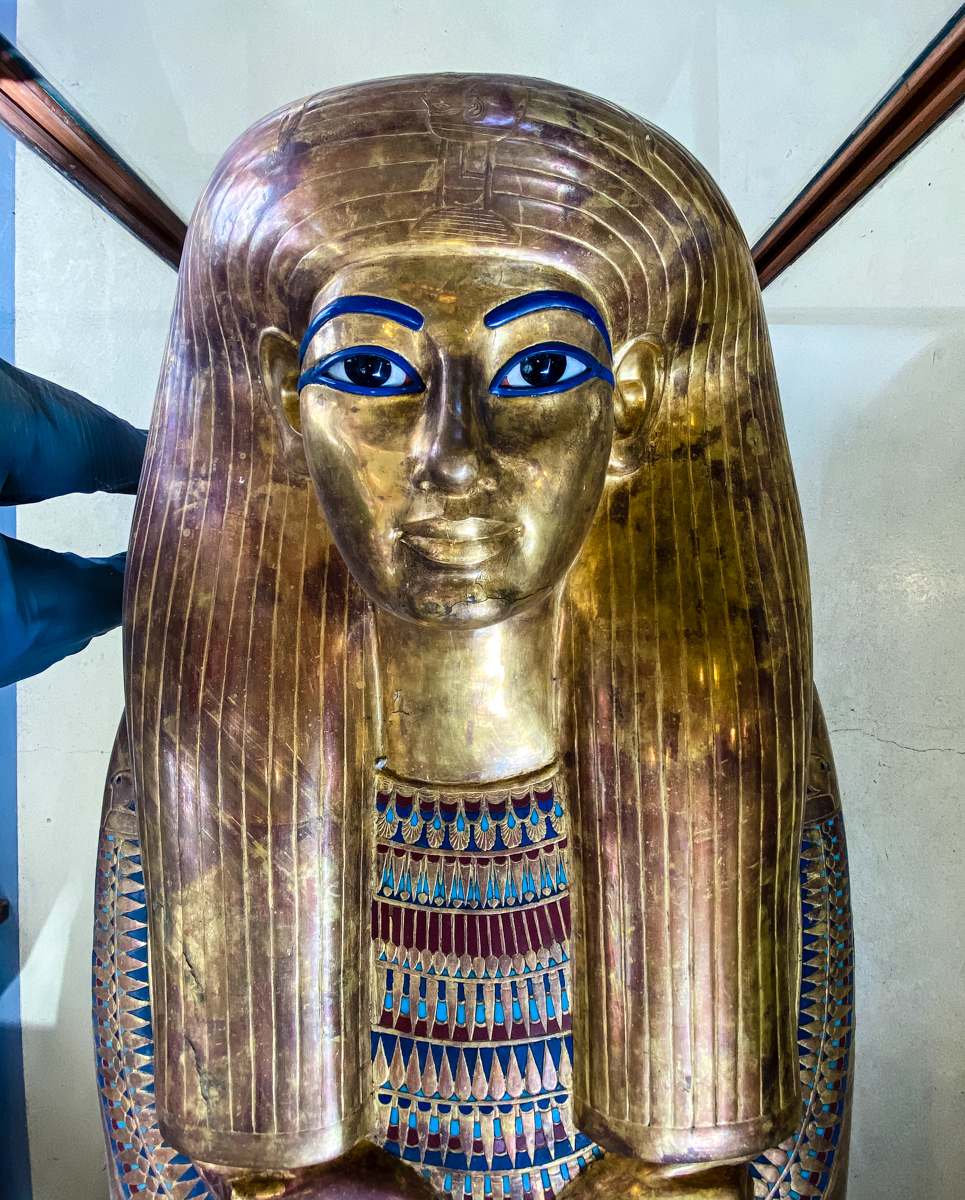
Just getting caught up on your travels. Love your photos and writing on this blog. Very informative and you’ve captured the fun as well.
Thanks Karen, so very kind of you to take your time to follow along. And thanks for your sweet note!